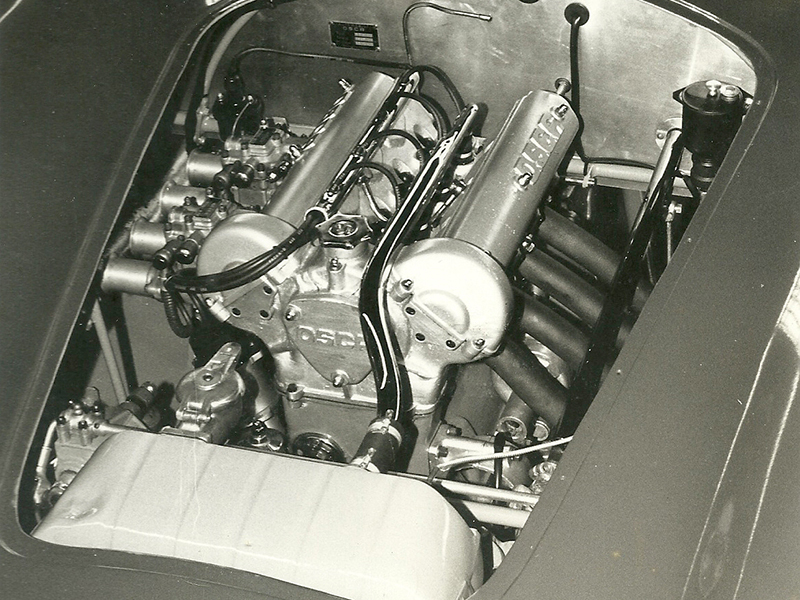O.S.C.A. is an acronym for Officine Specializzate Costruzione Automobili, or simply workshop for the construction of specialized automobiles. In fact, OSCAs were jewel like racing cars built by the Maserati brothers in their next life, after selling the Maserati brand and factory to Omer Orsi in the 1950s.
My first encounter with an OSCA was in 1952, when my father invited a good racing friend, Al Garthwaite, to come for Sunday lunch at our home in Radnor Pennsylvania.
I remember hearing this fierce growling noise from an open exhaust with lots of whining gear sounds coming down our driveway. Before I saw it, I could smell an acrid odor of Castrol oil. I rushed to my window, stuck my head outside and there was this jewel of an OSCA sports car, in fact, it was the Ex Giulio Cabianca MT4 1100cc Mille Miglia OSCA class winner in 1952: I was in love!!! It was really beautiful. From that time on, OSCAs were amongst my favorites.
A year later, when on a family outing in Italy, I went with my dad to the OSCA factory in Bologna. I was in awe to see these beautiful jewel-like cars being built and I remember Bindo Maserati showing us around and explaining all the intricacies and technical features of their cars.
It was really exciting to examine their first Grand Prix V12 which was being readied for its first outing and a stunning OSCA MT4 Berlinetta, being built for Gigi Villoresi. I noticed that the OSCA badge on the nose of the GP car was askew. I pointed this out to dad. Bindo was watching and in 5 minutes an apprentice arrived with a small round file removed the badge and elongated the mounting holes and remounted it in the correct position. This was the mentality and work ethic of the Maserati brothers: everything they made was to the highest possible standard.
As many of you already know, OSCAs were giant-killers and had great success throughout the world. In fact, Stirling Moss won 1st overall, in the “12 hours of Sebring” in a 1500CC MT4 OSCA beating many far more potent cars like Aston Martin, Ferrari, and Jaguar.
Fast-forward 20 years to the mid-1970s, when the Griswold Company was in operation in Berkeley California. My landlord, Steven Block, had a real love for Italian cars. He called me one day and asked me to go to San Francisco to look at a 1954 OSCA MT4 n.1164 that had been sleeping in a garage in Pacific Heights for years. Steve made all the arrangements to go and have a look at it with the owner. When the garage doors were opened, there was no car to be seen. It was, in fact, hanging from the roof of the garage, held there by ropes. We lowered it down to have a close look.
It was fortunately complete and a deal was struck and money handed over. The first stop was my shop in Berkeley to deliver the car for a full restoration. I was really pleased to be able to restore one of my favorite cars. This was going to be an easy job due to the fact that the car was complete and unmolested. It had never been in a racing accident. It took about 8 months to finish her. She was really beautiful to look at in her original dark blue color which showed off her elegant sporty lines. Morelli was their body builder at this time and they really knew their craft.
I had never driven an OSCA. I was really surprised how fast it was. It came as no surprise that so much racing success had been achieved. It really flew and had very light steering and great brakes. Road holding was fantastic. The only annoying thing about it was that the engine was solidly mounted to the frame without rubber so all the whole car was subject to extreme vibrations. Other than this, it was an almost perfect racing car, but this isn’t surprising considering its bloodlines emanate from the Maserati brothers. My respect and admiration for OSCA remain to this day.


